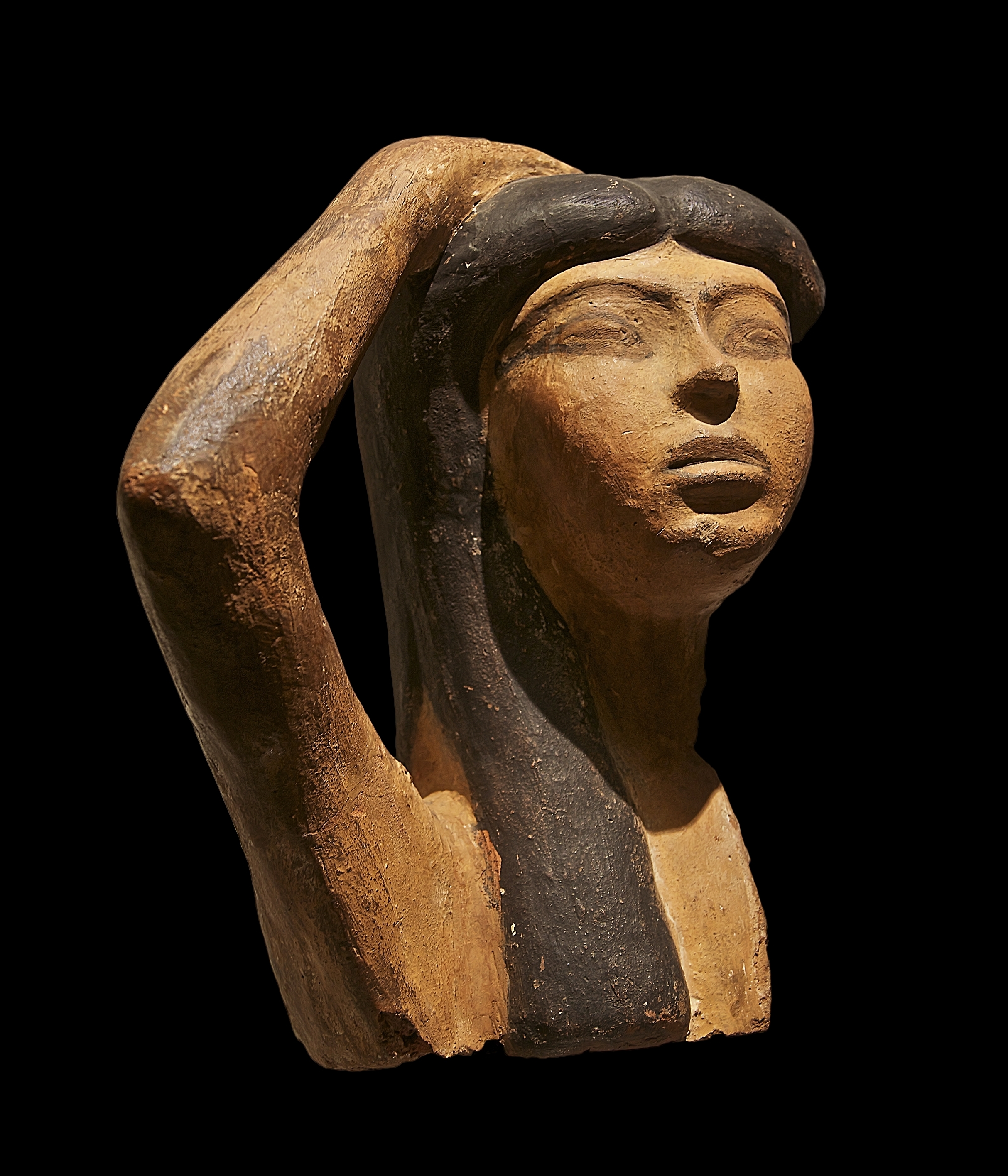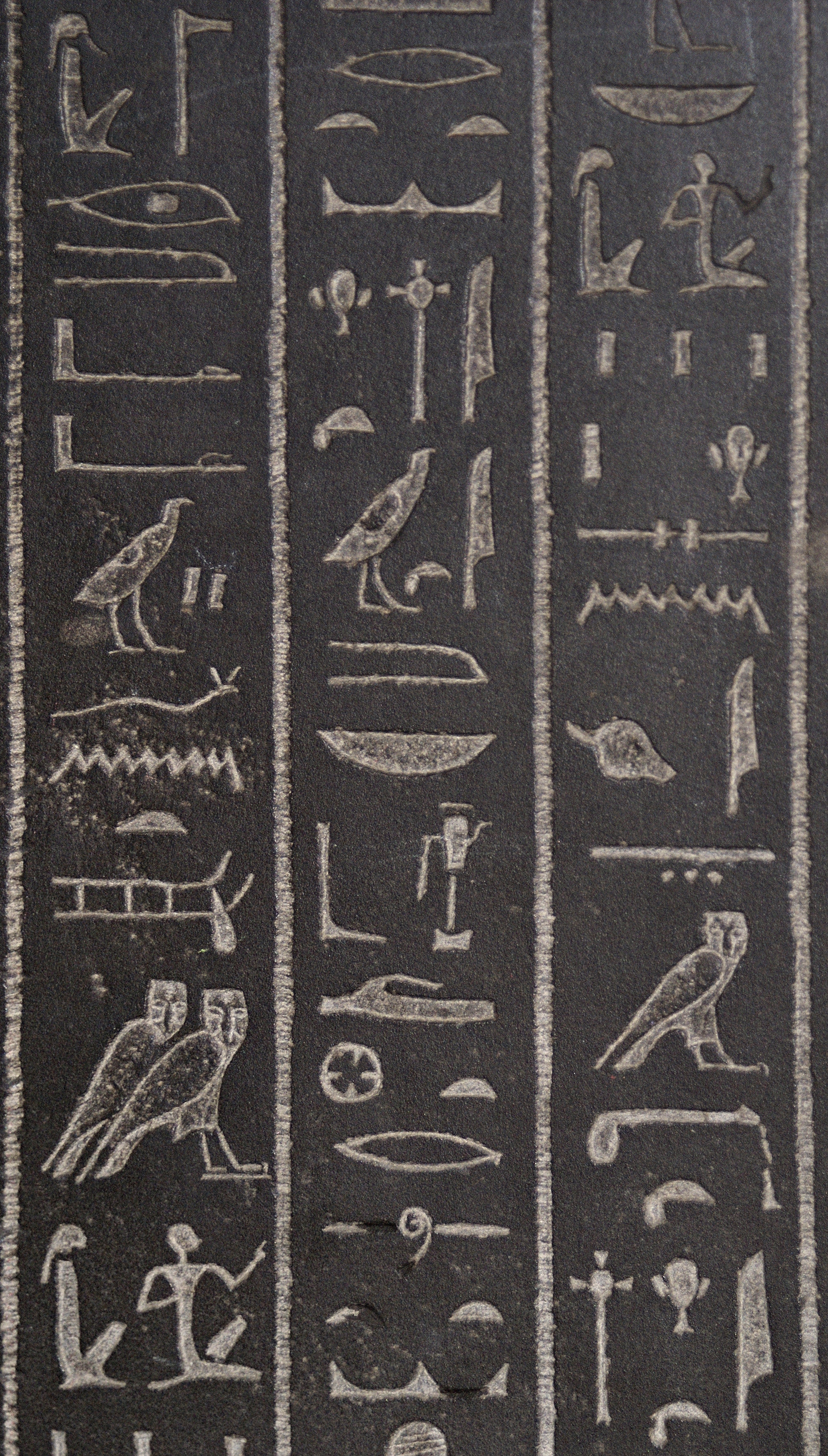|
Egg (hieroglyph)
The ancient Egyptian Egg hieroglyph, Gardiner's Sign List, Gardiner sign listed no. H8, is a portrayal of an ''oval-shaped egg'', tilted at an angle, within the Gardiner signs for ''parts of birds''. It is an Egyptian language Egyptian hieroglyphs, hieroglyph determinative used for the Egyptian word ', "egg". It is also used for the names of goddesses. Goddess Isis uses the egg in her quadrat (hieroglyph block), hieroglyphic block.Betrò, 1995, Egg: p. 125. Q1-X1:H8 There are variations of her name block. Cleopatra III uses the Egg hieroglyph as part of her name within her cartouch See also *Gardiner's Sign List#H. Parts of Birds *List of Egyptian hieroglyphs File:Edfu24 Wadjet.jpg, Wall relief File:Isis DSCN5917.JPG, Relief File:Wall relief Kom Ombo17.JPG, Goddess Isis File:Wall relief Kom Ombo19.JPG, Cleopatra III cartouche, and multiple uses of the Egg hieroglyph File:Osiris E9418 mp3h8807.jpg, References *Betrò, 1995. ''Hieroglyphics: The Writings of Ancient Egypt'', ... [...More Info...] [...Related Items...] OR: [Wikipedia] [Google] [Baidu] |
Ancient Egypt
Ancient Egypt () was a cradle of civilization concentrated along the lower reaches of the Nile River in Northeast Africa. It emerged from prehistoric Egypt around 3150BC (according to conventional Egyptian chronology), when Upper and Lower Egypt were amalgamated by Menes, who is believed by the majority of List of Egyptologists, Egyptologists to have been the same person as Narmer. The history of ancient Egypt unfolded as a series of stable kingdoms interspersed by the "Periodization of ancient Egypt, Intermediate Periods" of relative instability. These stable kingdoms existed in one of three periods: the Old Kingdom of Egypt, Old Kingdom of the Early Bronze Age; the Middle Kingdom of Egypt, Middle Kingdom of the Middle Bronze Age; or the New Kingdom of Egypt, New Kingdom of the Late Bronze Age. The pinnacle of ancient Egyptian power was achieved during the New Kingdom, which extended its rule to much of Nubia and a considerable portion of the Levant. After this period, Egypt ... [...More Info...] [...Related Items...] OR: [Wikipedia] [Google] [Baidu] |
Oval
An oval () is a closed curve in a plane which resembles the outline of an egg. The term is not very specific, but in some areas of mathematics (projective geometry, technical drawing, etc.), it is given a more precise definition, which may include either one or two axes of symmetry of an ellipse. In common English, the term is used in a broader sense: any shape which reminds one of an egg. The three-dimensional version of an oval is called an ovoid. Oval in geometry The term oval when used to describe curves in geometry is not well-defined, except in the context of projective geometry. Many distinct curves are commonly called ovals or are said to have an "oval shape". Generally, to be called an oval, a plane curve should ''resemble'' the outline of an egg or an ellipse. In particular, these are common traits of ovals: * they are differentiable (smooth-looking), simple (not self-intersecting), convex, closed, plane curves; * their shape does not depart much from that of ... [...More Info...] [...Related Items...] OR: [Wikipedia] [Google] [Baidu] |
Egyptian Language
The Egyptian language, or Ancient Egyptian (; ), is an extinct branch of the Afro-Asiatic languages that was spoken in ancient Egypt. It is known today from a large corpus of surviving texts, which were made accessible to the modern world following the decipherment of the ancient Egyptian scripts in the early 19th century. Egyptian is one of the earliest known written languages, first recorded in the hieroglyphic script in the late 4th millennium BC. It is also the longest-attested human language, with a written record spanning over 4,000 years. Its classical form, known as " Middle Egyptian," served as the vernacular of the Middle Kingdom of Egypt and remained the literary language of Egypt until the Roman period. By the time of classical antiquity, the spoken language had evolved into Demotic, and by the Roman era, diversified into various Coptic dialects. These were eventually supplanted by Arabic after the Muslim conquest of Egypt, although Bohairic Coptic ... [...More Info...] [...Related Items...] OR: [Wikipedia] [Google] [Baidu] |
Egyptian Hieroglyphs
Ancient Egyptian hieroglyphs ( ) were the formal writing system used in Ancient Egypt for writing the Egyptian language. Hieroglyphs combined Ideogram, ideographic, logographic, syllabic and alphabetic elements, with more than 1,000 distinct characters.In total, there were about 1,000 graphemes in use during the Old Kingdom period; this number decreased to 750–850 during the Middle Kingdom, but rose instead to around 5,000 signs during the Ptolemaic period. Antonio Loprieno, ''Ancient Egyptian: A Linguistic Introduction'' (Cambridge: Cambridge UP, 1995), p. 12. Cursive hieroglyphs were used for Ancient Egyptian literature, religious literature on papyrus and wood. The later hieratic and demotic (Egyptian), demotic Egyptian scripts were derived from hieroglyphic writing, as was the Proto-Sinaitic script that later evolved into the Phoenician alphabet. Egyptian hieroglyphs are the ultimate ancestor of the Phoenician alphabet, the first widely adopted phonetic writing system. Moreov ... [...More Info...] [...Related Items...] OR: [Wikipedia] [Google] [Baidu] |
Determinative
A determinative, also known as a taxogram or semagram, is an ideogram used to mark semantic categories of words in logographic scripts which helps to disambiguate interpretation. They have no direct counterpart in spoken language, though they may derive historically from glyphs for real words, and functionally they resemble classifiers in East Asian and sign languages. For example, Egyptian hieroglyphic determinatives include symbols for divinities, people, parts of the body, animals, plants, and books/abstract ideas, which helped in reading but were not pronounced. Cuneiform In cuneiform texts of Sumerian, Akkadian and Hittite languages, many nouns are preceded or followed by a Sumerian word acting as a determinative; this specifies that the associated word belongs to a particular semantic group.Edzard, 2003 These determinatives were not pronounced. In transliterations of Sumerian, the determinatives are written in superscript in upper case. Whether a given sign is a m ... [...More Info...] [...Related Items...] OR: [Wikipedia] [Google] [Baidu] |
Isis
Isis was a major goddess in ancient Egyptian religion whose worship spread throughout the Greco-Roman world. Isis was first mentioned in the Old Kingdom () as one of the main characters of the Osiris myth, in which she resurrects her slain brother and husband, the divine king Osiris, and produces and protects his heir, Horus. She was believed to help the dead enter the afterlife as she had helped Osiris, and she was considered the divine mother of the pharaoh, who was likened to Horus. Her maternal aid was invoked in healing spells to benefit ordinary people. Originally, she played a limited role in royal rituals and temple rites, although she was more prominent in funerary practices and magical texts. She was usually portrayed in art as a human woman wearing a throne-like hieroglyph on her head. During the New Kingdom (), as she took on traits that originally belonged to Hathor, the preeminent goddess of earlier times, Isis was portrayed wearing Hathor's headdress: a ... [...More Info...] [...Related Items...] OR: [Wikipedia] [Google] [Baidu] |
Quadrat (hieroglyph Block)
A quadrat block (or ''quadrate block'') is a virtual rectangle or Square (geometry), square in Egyptian hieroglyphs, Egyptian hieroglyphic text. The glyphs (hieroglyphs) can be variable in number within the ''virtual block'', though they are often proportioned according to variable standardized rules of scribe, scribal methods. The definition for the block in ''Illustrated Hieroglyphics Handbook'' by Schumann-Antelme and Rossini, is: "A 'quadrate' is a virtual square, which although not drawn, guides the hand of the scribe. Hieroglyphs must be aesthetically positioned within the quadrate and their size must be proportioned accordingly. They form groups that are pleasing to the eye and based on the laws of balance." Rosetta Stone closeup An example of five lines of text from the Rosetta Stone, (lines 9, 10, 11, 12, 13), shows a width of about six to seven virtual blocks. Line 12, (fourth line) is illustrative of the variable size, in this case the widths, of the 'virtual quadrate ... [...More Info...] [...Related Items...] OR: [Wikipedia] [Google] [Baidu] |
Cleopatra III
Cleopatra III (; c.160–101 BC) was a queen of Egypt. She ruled at first with her mother Cleopatra II and husband Ptolemy VIII from 142 to 131 BC and again from 127 to 116 BC. She then ruled with her sons Ptolemy IX and Ptolemy X from 116 to 101 BC. Cleopatra III was also known as Cleopatra Euergetis (Εὐεργέτις) while associated with her husband Ptolemy VIII or her son Ptolemy X. She is attested as Cleopatra Philometor Soteira (Φιλομήτωρ Σώτειρα) while associated with her eldest son Ptolemy IX. According to Strabo, she was sometimes known as Kokke (Κόκκη) when discussed in relation to her son Ptolemy X.Cleopatra III by Chris Bennett Life Cleopatra III's uncle Pto ...[...More Info...] [...Related Items...] OR: [Wikipedia] [Google] [Baidu] |
List Of Egyptian Hieroglyphs
The total number of distinct Egyptian hieroglyphs increased over time from several hundred in the Middle Kingdom to several thousand during the Ptolemaic Kingdom. In 1928/1929 Alan Gardiner published an overview of hieroglyphs, Gardiner's sign list, the basic modern standard. It describes 763 signs in 26 categories (A–Z, roughly). Georg Möller compiled more extensive lists, organized by historical epoch (published posthumously in 1927 and 1936). In Unicode, the block ''Egyptian Hieroglyphs'' (2009) includes 1071 signs, organization based on Gardiner's list. As of 2016, there is a proposal by Michael Everson to extend the Unicode standard to comprise Möller's list. Subsets Notable subsets of hieroglyphs: * Determinatives * Uniliteral signs * Biliteral signs * Triliteral signs * Egyptian numerals Letter classification by Gardiner List of hieroglyphs See also *Egyptian hieroglyphs * Transliteration of Ancient Egyptian * Gardiner's sign list * List of cuneiform ... [...More Info...] [...Related Items...] OR: [Wikipedia] [Google] [Baidu] |
Relief
Relief is a sculpture, sculptural method in which the sculpted pieces remain attached to a solid background of the same material. The term ''wikt:relief, relief'' is from the Latin verb , to raise (). To create a sculpture in relief is to give the impression that the sculpted material has been raised above the background Plane (geometry), plane. When a relief is carved into a flat surface of stone (relief sculpture) or wood (relief carving), the field is actually lowered, leaving the unsculpted areas seeming higher. The approach requires chiselling away of the background, which can be time-intensive. On the other hand, a relief saves forming the rear of a subject, and is less fragile and more securely fixed than a sculpture in the round, especially one of a standing figure where the ankles are a potential weak point, particularly in stone. In other materials such as metal, clay, plaster stucco, ceramics or papier-mâché the form can be simply added to or raised up from the bac ... [...More Info...] [...Related Items...] OR: [Wikipedia] [Google] [Baidu] |





